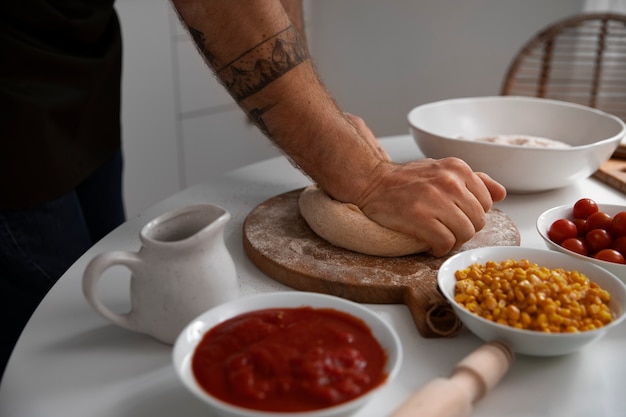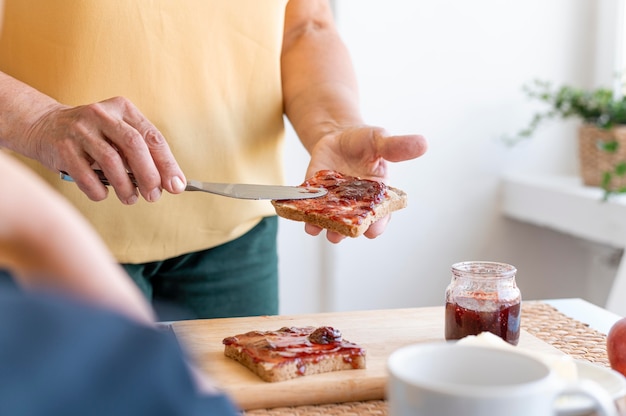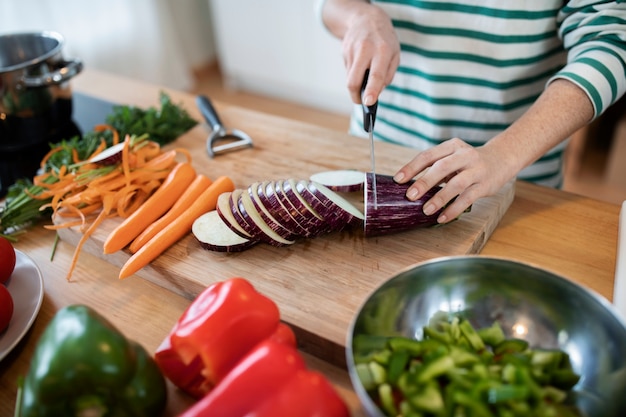Ah, meatloaf. The very word conjures up images of cozy Sunday dinners, family gatherings, and that warm, comforting aroma that fills the kitchen. It's a dish that’s been a staple in kitchens for generations, and for good reason. A perfectly baked meatloaf is a masterpiece of comfort food - a symphony of textures and flavors that’s sure to please even the pickiest of eaters. But achieving that perfect golden-brown crust and succulent, juicy interior isn’t always as straightforward as it seems. The biggest hurdle? The baking time. A little too short, and you’re left with a raw center. A bit too long, and you end up with a dry, disappointing mess. Fear not, fellow meatloaf enthusiasts, because I’m here to guide you through the intricacies of meatloaf baking time, ensuring you create a loaf that’s not only safe but also a culinary triumph.
Part 1: The Meatloaf Mythbusters

Let’s start by dismantling some common misconceptions about meatloaf baking time. You’ve probably heard the adage, “one size fits all.” But when it comes to meatloaf, that simply isn’t true. The reality is that baking time is far from a one-size-fits-all solution. It’s a nuanced dance with several factors coming into play, each contributing to the final result.
1. Size Matters: The Meatloaf Dimensions
Think of it like this: a hefty, two-pound meatloaf is akin to a marathon runner, while a petite one-pound loaf is like a sprinter. The larger loaf will require a much longer baking time to allow heat to penetrate its core and reach that perfect internal temperature. It’s like those old-fashioned clock radios – you can’t simply expect the same settings to work for every size.
2. The Inside Scoop: meatloaf temperature
Temperature is everything. Just like a good cup of tea, a meatloaf needs to reach the right internal temperature to be considered safe and delicious. Aim for a consistently safe 160°F (71°C). This temperature ensures that any lurking bacteria are effectively eliminated, while also guaranteeing a tender and juicy outcome.
3. The Shape Shifter: Meatloaf Mold
The shape of your meatloaf also affects baking time. A loaf with a smaller cross-section, like a cylindrical one, will cook faster than a flat, wide one. Think of it like trying to roast a whole chicken versus a piece of chicken breast – the smaller pieces cook faster. Heat has to penetrate the entire loaf, and a smaller surface area means a faster cooking time.
4. Oven Temperatures: Hot or Not?
Even the most diligent home cook knows that ovens can be unpredictable. The dial might say 350°F (175°C), but the actual temperature inside can fluctuate. This variability can affect the cooking time, making it crucial to monitor your oven's performance.
5. The Extra Players: Fillings and Coatings
Don’t underestimate the impact of those extra ingredients! Fillings like vegetables or cheese can act like heat barriers, slowing down the cooking process. Imagine those fillings like a cozy blanket, insulating the meatloaf core and extending the baking time. Similarly, coatings like breadcrumbs or bacon can impact how the heat distributes and interacts with the loaf, influencing the overall cooking time.
Part 2: The Meatloaf Baking Time Formula

Now that we’ve busted those meatloaf myths, let’s dive into the formula for calculating the right baking time. Think of this as the secret recipe for meatloaf perfection.
The Golden Rule: For a one-pound meatloaf, you’ll need approximately 45 minutes of baking time at 350°F (175°C). This is a great starting point for any meatloaf adventure.
Adjusting for Size: For every additional pound of meatloaf, add an additional 15-20 minutes to the baking time. So, a two-pound meatloaf would need around 60-70 minutes of baking time. Remember, it’s better to err on the side of caution and add a few extra minutes than to risk undercooked meat.
The Time is Now: The internal temperature is non-negotiable. Use a meat thermometer to confirm that the core of your meatloaf reaches 160°F (71°C). This is the ultimate indicator of meatloaf readiness, ensuring both safety and deliciousness.
Part 3: Oven Confidence: The Truth About Your Oven

We’ve all been there: staring at the oven dial, hoping it reflects reality. Sadly, ovens can be notoriously inconsistent, even within the same model. The key to achieving meatloaf perfection is understanding your oven's quirks and adapting accordingly.
Oven Calibration: The Key to Consistency
Investing in a good-quality oven thermometer is a wise move. It allows you to calibrate your oven, ensuring that it reaches the desired temperature. No more guesswork! You can trust that your oven is delivering what it promises, leading to more accurate cooking times and consistent results.
The Oven's Temperature Fluctuations: A Case of the Flu
Even with a calibrated oven, there will be those pesky fluctuations. It’s best to stay vigilant and monitor the internal temperature of your meatloaf with a meat thermometer. This way, you can adjust the baking time as needed, ensuring it reaches that critical 160°F (71°C). Remember, consistency is key to a perfect meatloaf.
Part 4: The Visual Guide: Signs of a Perfectly Baked Loaf
While the meat thermometer is the ultimate judge, let’s not forget the power of visual cues. A perfectly baked meatloaf is a sight to behold, a testament to culinary mastery. Keep an eye out for these telltale signs of a successful meatloaf:
The Golden Brown Crust: A Visual Cue for Perfection
A beautiful, golden-brown crust is a surefire indication that your meatloaf has achieved that coveted level of doneness. It’s the result of the Maillard reaction, a chemical transformation that creates the lovely brown color and adds a layer of delicious flavor. It’s a visual feast for the eyes and a taste bud teaser.
The Meatloaf's Texture: A Firm Touch
Once your meatloaf is cooked, it should have a firm, springy texture. Gently press your finger into the center of the loaf. If it springs back readily, you’re in the clear. If it feels spongy or wobbly, it might need a few more minutes in the oven. Think of it as a test of its firmness, just like you would test the firmness of a ripe avocado.
The Internal Temperature: The Final Verdict
The final verdict, of course, comes down to the internal temperature. Has it reached that crucial 160°F (71°C)? If so, you’ve successfully conquered the art of meatloaf baking. Your patience and attention to detail have paid off. You’re ready to serve your culinary masterpiece!
Part 5: Meatloaf Baking Time: Common Mistakes to Avoid
Let’s face it, everyone makes mistakes in the kitchen. But the beauty of cooking is that we learn from them. Here are some common pitfalls to avoid, ensuring your meatloaf baking journey is as smooth as possible.
The Oven's Temperature: A Common Culprit
A common mistake is setting the oven temperature too low. If you’re aiming for 350°F (175°C), but your oven is running cool, you’ll likely end up with a dry, overcooked meatloaf. It’s like trying to bake a cake in a cool oven – the results won’t be pretty. Make sure your oven is preheated to the correct temperature before you pop that meatloaf in.
The Meatloaf's Size: Overloading the Oven
Overcrowding your oven is another common misstep. If you’re baking multiple dishes, the oven temperature can become uneven, leading to inconsistencies in cooking times. Remember, your meatloaf needs space to breathe and cook evenly. Give it some breathing room!
The Internal Temperature: undercooked meatloaf
Perhaps the most critical mistake is not checking the internal temperature. It's easy to assume that your meatloaf is done simply because it looks golden brown. But don’t be fooled by appearances. Use a meat thermometer to ensure that it reaches 160°F (71°C). Remember, safety comes first, and a meat thermometer is your best ally.
The Meatloaf's Resting Time: Patience is Key
Finally, don’t rush the resting time. Let the meatloaf rest for at least 10 minutes before slicing into it. This allows the juices to redistribute throughout the loaf, resulting in a more tender and flavorful outcome. Patience is a virtue, especially when it comes to achieving meatloaf perfection.
Part 6: Meatloaf Masterclass: Advanced Tips and Tricks
Now that you have the fundamentals down, let's elevate your meatloaf game with some advanced tips and tricks that will set your meatloaf apart.
The Meatloaf Mix: Mastering the Ingredients
Start with high-quality ground meat. Lean ground beef, ground pork, or a combination of both work beautifully. Don’t be afraid to experiment with different cuts, like chuck or sirloin. Remember, a flavorful meatloaf starts with quality ingredients.
The Meatloaf Binding: Secrets of a Perfect Loaf
The binder is crucial for holding the meatloaf together. Breadcrumbs, oats, or crushed crackers are all excellent choices. Add a little milk or water to moisten the binder and ensure it holds its shape. Think of the binder as the glue that binds the meatloaf together, ensuring a cohesive and structurally sound loaf.
The Meatloaf Seasoning: A Symphony of Flavors
Seasoning is what elevates your meatloaf from ordinary to extraordinary. Experiment with a blend of salt, pepper, garlic powder, onion powder, and even a touch of paprika. You can also add herbs like thyme, rosemary, or oregano for a fragrant touch. The key is to find a combination that complements your taste preferences and creates a symphony of flavors.
The meatloaf fillings: Adding a Touch of Indulgence
Fillings add a burst of flavor and visual appeal. Try diced vegetables like onions, carrots, or celery. Or get adventurous with chopped bacon, mushrooms, or even a layer of cheese. Let your culinary imagination run wild, creating a unique and delicious meatloaf that’s both visually appealing and bursting with flavor.
The meatloaf glaze: A Finishing Touch
A glaze is the finishing touch that adds a final layer of flavor and a beautiful shine to your meatloaf. Try a simple glaze made with ketchup, brown sugar, and a splash of vinegar. Get creative with your glaze – experiment with different ingredients like honey, mustard, or even barbecue sauce. The possibilities are endless.
Part 7: The meatloaf variations: A culinary adventure
Mastering the basics of meatloaf is just the beginning. Let’s push those boundaries and explore some exciting variations that will transform your meatloaf into a culinary adventure.
The Spicy Meatloaf: A Kick of Heat
For those who love a bit of heat, try adding chili powder, cayenne pepper, or a sprinkle of hot sauce to your meatloaf mix. You can even top it with a spicy jalapeno glaze. Think of it as adding a little fire to your comfort food. It’s a perfect choice for those who like their food with a bit of kick.
The Herb-Infused Meatloaf: A Bouquet of Aromas
Enhance the flavor profile with fresh or dried herbs. Try thyme, rosemary, parsley, or oregano. These herbs add a layer of complexity and freshness to your meatloaf, creating a fragrant and aromatic experience. It’s like bringing the garden to your table.
The Italian Meatloaf: A Mediterranean Delight
Embrace the flavors of Italy by adding Italian herbs, Parmesan cheese, and breadcrumbs to your meatloaf. You can even top it with a marinara sauce and serve it with pasta. It’s a perfect fusion of Italian flavors, creating a comforting and flavorful dish.
The Asian-Inspired Meatloaf: A Fusion of Flavors
Get adventurous with Asian-inspired flavors. Incorporate ingredients like ginger, soy sauce, and sesame oil for a unique and aromatic meatloaf. It’s a fusion of flavors that will tantalize your taste buds, introducing a touch of the Orient to your meatloaf.
Part 8: The Meatloaf Reimagined: Beyond the Traditional Loaf
Who says meatloaf has to be confined to a traditional loaf shape? Let’s break the mold and explore some fun and unexpected variations that will redefine your concept of meatloaf.
The Mini Meatloaf: Perfect for Parties
Bake individual mini meatloaves for a party appetizer or for a fun family dinner. You can experiment with different fillings and glazes to add variety. Think of them as adorable little bites of comfort food, perfect for sharing with friends and family.
The Meatloaf Muffins: A Fun Twist on the Classic
Get creative and bake meatloaf in muffin tins for a unique and portable option. You can add a variety of toppings and fillings for extra flavor. It’s a fun twist on the classic, perfect for lunchboxes or picnics.
The Meatloaf Meatballs: A New Take on an Old Favorite
Turn your meatloaf mix into meatballs for a delightful and versatile dish. You can serve them with pasta sauce, gravy, or even a tangy barbecue sauce. It’s a new take on an old favorite, perfect for a family dinner or a casual gathering.
Part 9: meatloaf leftovers: A Culinary Treasure
Let’s be honest, meatloaf is a dish that’s almost guaranteed to yield leftovers. But don’t despair, because those leftovers are a culinary treasure waiting to be explored.
Meatloaf Sandwiches: A Classic Comfort Food
Slice up your leftover meatloaf and create mouthwatering sandwiches. Add a layer of cheese, a few pickles, and a dollop of mustard for a perfect lunchtime treat. It’s a classic comfort food, perfect for a quick and satisfying lunch or a late-night snack.
Meatloaf Salad: A Light and Refreshing Option
Dice your leftover meatloaf and add it to a salad for a protein-packed meal. Combine it with lettuce, tomatoes, onions, and a vinaigrette dressing for a light and refreshing option. It’s a perfect way to enjoy leftover meatloaf while also adding a healthy boost to your meal.
Meatloaf Hash: A Hearty and Savory Breakfast
Get creative with your leftovers by making a hearty meatloaf hash. Dice your meatloaf, combine it with potatoes, onions, and a few seasonings, and pan-fry it to perfection. It’s a savory and satisfying breakfast option, perfect for those who love a hearty start to the day.
Part 10: meatloaf faqs: Answering Your Questions
You might have some questions about baking the perfect meatloaf, so here are some common FAQs to address those burning concerns.
Q: What temperature should I bake my meatloaf?
A: The ideal baking temperature for a meatloaf is 350°F (175°C). This temperature ensures that the meatloaf cooks evenly and develops a beautiful golden-brown crust. It’s a happy medium that promotes even cooking and a delicious outcome.
Q: How long should I bake my meatloaf?
A: The baking time for a meatloaf depends on its size. A one-pound meatloaf will need approximately 45 minutes, while a two-pound meatloaf will need 60-70 minutes. Always check the internal temperature with a meat thermometer to ensure it reaches 160°F (71°C). Remember, consistency is key to a perfect meatloaf.
Q: What happens if I overbake my meatloaf?
A: Overbaking your meatloaf will result in a dry and tough loaf. If you accidentally overbake it, there’s not much you can do to salvage it. Just try to avoid overcooking in the future by keeping a close eye on the baking time and internal temperature. Remember, a watchful eye is crucial for meatloaf success.
Q: What if my meatloaf isn’t cooked through?
A: If your meatloaf isn’t cooked through, you can simply bake it for a few more minutes until the internal temperature reaches 160°F (71°C). However, if it’s significantly undercooked, it’s best to start over to ensure safety.
Q: What should I do with leftover meatloaf?
A: Leftover meatloaf can be used in a variety of dishes. Try making sandwiches, salads, hash, or even meatloaf soup. Be creative and let your culinary imagination run wild! Leftovers are an opportunity to explore new flavor combinations and create a delicious meal.
Conclusion: Embracing the Meatloaf Journey
From the humble beginnings of a simple meatloaf recipe to the endless possibilities of culinary creativity, the journey of baking the perfect meatloaf is a rewarding one. It's a testament to the power of tradition, the beauty of home cooking, and the joy of sharing a delicious meal with loved ones.
So, next time you're craving a comforting classic, grab your ingredients, follow the tips and tricks, and embark on your own meatloaf adventure. You'll be surprised at how easy it is to create a delicious and satisfying dish that’s sure to please everyone at the table. It’s a journey that’s both rewarding and delicious.
Everyone is watching

Corn on the Cob: The Ultimate Guide to Perfectly Cooked Ears
Healthy MealsAh, corn on the cob. Just the name evokes images of sunny days, barbecues, and that sweet, juicy flavour that ...

Perfect Pork Roast Oven Cooking Time: A Guide to Delicious Results
Healthy MealsThere's something truly satisfying about a perfectly roasted pork. The aroma alone is enough to make your mout...

Ham Cooking Time: How Long to Bake, Smoke, or Boil a Delicious Ham
Healthy MealsAh, ham. It's a classic, isn't it? A real crowd-pleaser, especially around holidays. And when done right, it'...

Scallops: The Ultimate Guide to Perfect Cooking
Healthy MealsAh, scallops. Those delicate, sweet, and utterly delicious morsels of the sea. They hold a special place in my...

Spaghetti Squash: The Ultimate Guide to Cooking and Serving
Healthy MealsRemember that time you saw spaghetti squash at the supermarket, looking all bumpy and strange, and thought, "W...
